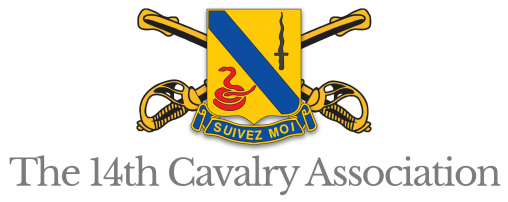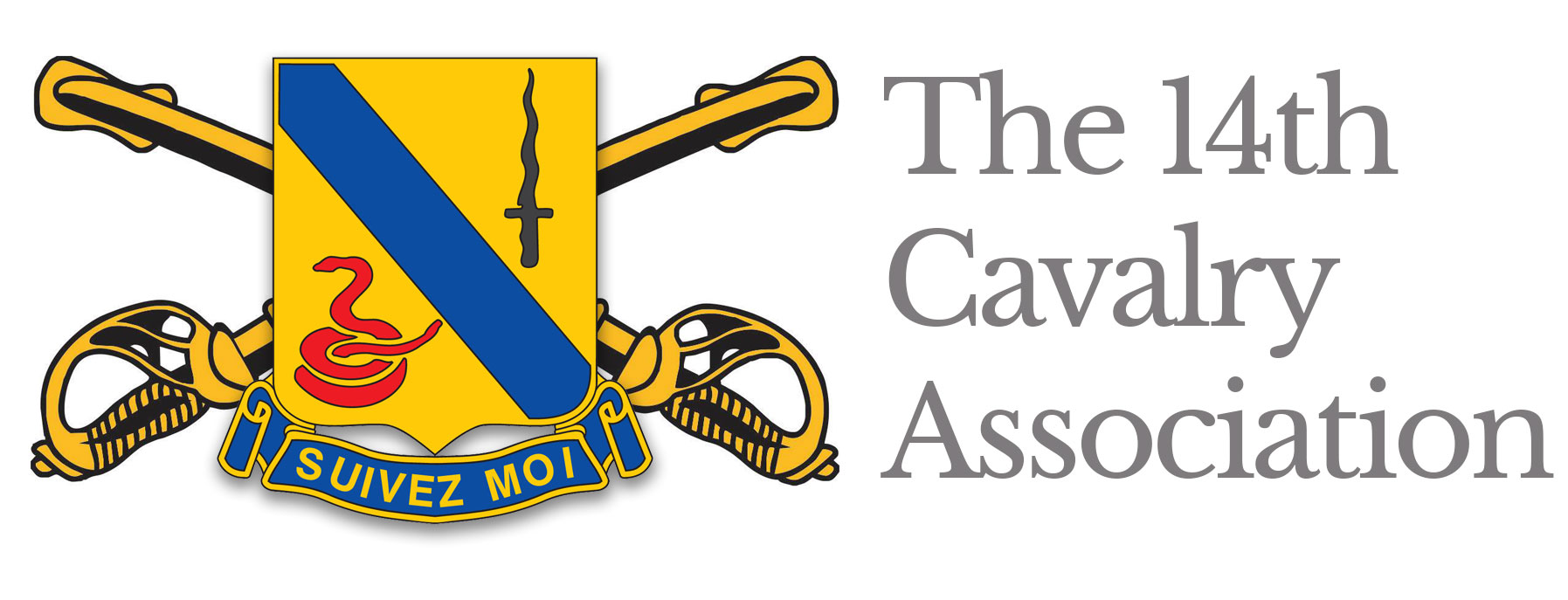A Cavalryman at Last!
I had wanted to be in the cavalry from the time I was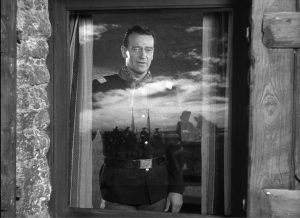 ten years old, having been inspired by John Ford’s classic Fort Apache. Near the end of the movie, a reporter makes a statement about a deceased officer being forgotten. Viewed through a window in which appears the reflection of a cavalry column passing by, John Wayne (Lieutenant Colonel York) responds with “You’re wrong there. They haven’t been forgotten because they haven’t died. They’re living right out there, Collingwood and the rest. They’ll keep on living as long as the regiment lives. Their faces may change, their names, but they’re there. They’re the regiment, the regular Army—now and fifty years from now”. He could have said 150 years and still been right. That movie determined my choice of the Army for a career.
ten years old, having been inspired by John Ford’s classic Fort Apache. Near the end of the movie, a reporter makes a statement about a deceased officer being forgotten. Viewed through a window in which appears the reflection of a cavalry column passing by, John Wayne (Lieutenant Colonel York) responds with “You’re wrong there. They haven’t been forgotten because they haven’t died. They’re living right out there, Collingwood and the rest. They’ll keep on living as long as the regiment lives. Their faces may change, their names, but they’re there. They’re the regiment, the regular Army—now and fifty years from now”. He could have said 150 years and still been right. That movie determined my choice of the Army for a career.
Three of us were reassigned from the 1/34th Armor at Fort Lewis to the 1st Reconnaissance Squadron, 14th Armored Cavalry Regiment. We sailed from Bayonne, New Jersey to Bremerhaven, Germany in late January of 1961, and then overland by train to Fulda, Germany. We arrived at the Fulda Bahnhof in the wee hours and called a phone number on a sign for incoming U.S. Forces. We were picked up by the D Troop supply sergeant in a 2½ ton truck and taken to Downs Barracks.
The squadron was in the field for FTX Wintershield II, a NATO field exercise. We took advantage of the three day wait before joining the squadron by exploring Fulda’s gasthauses and discovering the superiority of German bier (beer).
Dave Faulk and I were assigned to D Troop (the squadron’s tank company) with me becoming the assistant tank commander (gunner) on the 3rd Platoon leader’s tank. When moving, my vision was limited to the gunner’s periscopes which is often just sky as the gun tube is usually elevated.
Soon after the exercise started the squadron was ordered to commence offensive operations, and away we went. We were rolling along at a good clip, when the tank suddenly stopped and sharply tilted to the right. The platoon leader (Lt. Bobby Carter) evacuated and got on another tank to continue the attack, leaving driver Chuck Riley and I alone with our tank precariously perched on the side of the road.
-
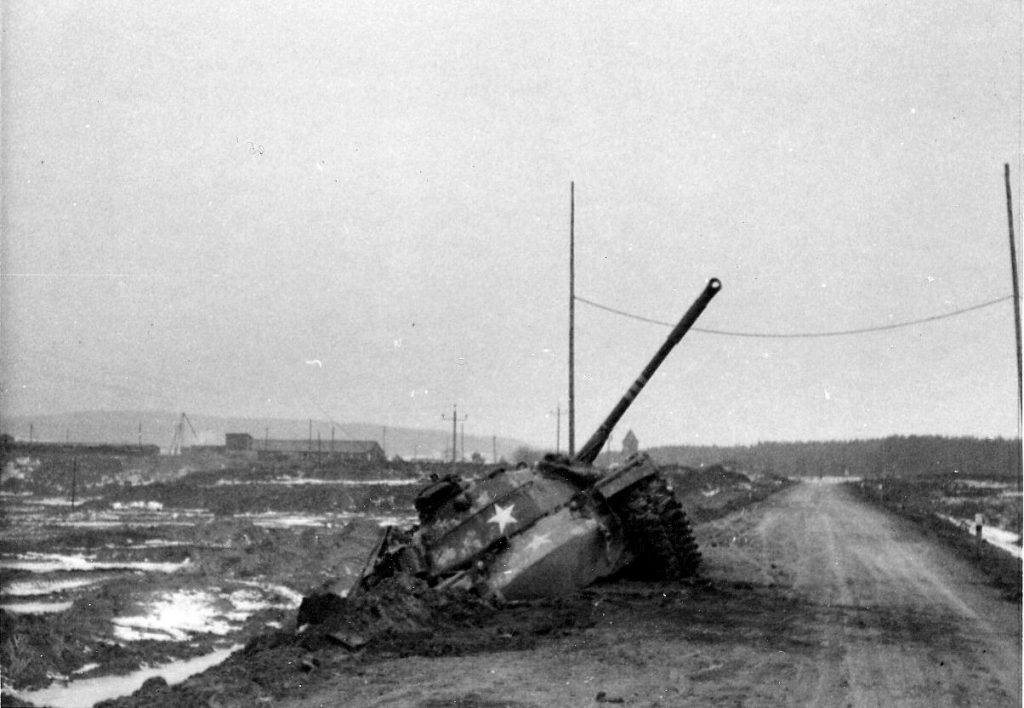
D-31 Broke a Brand-New Road -
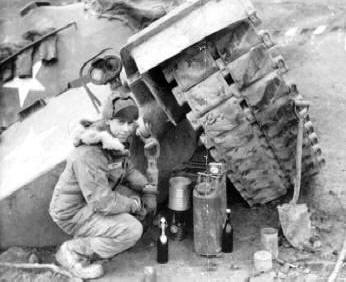
Me, surviving Wintershield II -
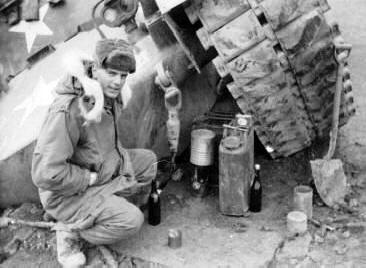
SP5 Chuck Riley with C-rations & bier
We managed to survive the next three days by supplementing our C-rations with brotchen (bread rolls), bier (beer), and other goodies by trading gasoline hand-pumped from the tank to passing Germans. When the troop finally came back to fetch us, they tried pulling us out with five tanks to no avail. It took two big bull dozers hooked together to get us out.
I had arrived in Fulda without my family because a dependent travel ban was in place to help reduce the gold flow out of the U.S. treasury. Newly-elected President John Kennedy ended the ban shortly after his inauguration.
During the seven months waiting for my family to join me, I lived in the barracks. A standout memory of mine was that we had a live bugler, not a recording as was common throughout the Army. It was almost romantic to hear Tattoo sounded at 2200 (10 p.m.) and Taps an hour later.
Most people think soldiers get up at Reveille. Not so. We were awakened and got up at First Call and were in formation to salute the flag as it was raised at Reveille. At 5 p.m. Retreat was sounded, a 105mm howitzer was fired, followed by To The Colors as the flag was lowered.
When my wife and five month-old daughter finally arrived in August, we were quartered in a two-room (kitchen and bedroom) upstairs apartment on a farm in nearby Haimbach. A cold water tap was just outside our door, and we had to go downstairs and past the cows to the toilet in the barn. At least it was indoors!
When not engaged in vehicle maintenance and classes, we spent a lot of time training. Among the training areas we went to were Wildflecken, Hohenfels, Bergen-Hohne, and Grafenwöhr. Wildflecken was the nearest, but had limited main gun and other firing ranges. We went to Bergen-Hohne once, which at the time was a British base where we could fire our 90mm guns on known-distance ranges. For the full range of maneuver and gunnery training, Grafenwöhr was the place. It was at Graf that we went through the Tank Crew Qualification Course (TCQC). Each tank crew went through TCQC both day and night. It was a tough course and only a few of our crews qualified with the M48A2 tank. With the M60A1, which replaced the M48A2, all of our crews qualified, mainly due to a better fire control system.
Below are various pictures of our training, including the TCQC course at Grafenwöhr (click on pictures to enlarge). I’ve included an audio file of a tank firing (from inside the tank). You will notice a clanging after the gun fires; that is the brass being ejected onto the turret floor, followed by the noise of a ventilator expelling the smoke.
In late 1963 I became the troop operations & training NCO. During field exercises, the two headquarters platoon tanks and my M113 armored personnel carrier, which had been configured to be the troop command post (CP), usually operated separately from the tank platoons. I normally found a hilltop somewhere that afforded the best communications with the rest of the troop. Our commo sergeant was a genius and rigged an antenna system that greatly extended our range. We could communicate with squadron headquarters in Fulda from Bad Kissingen, more than 50km distant as the crow flies.
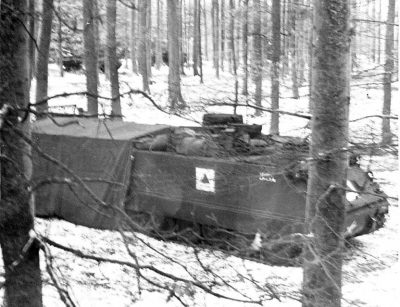
We held most of our field training exercises in our squadron area of operations. Two incidents stand out in my memory. The first was when my platoon was in a defensive position as an armored infantry company came down the road right into our ambush. We cut loose, firing 90m blanks—and they just kept moving. My platoon sergeant became so incensed that he went charging down the hill and over a bank, his tank landing on top of an armored personnel carrier. Miraculously, no one was hurt, and the infantry company stopped! The second was a time I was observing a road the troop would to be using from a hilltop. In those days, a tank platoon consisted of five tanks. When in column, the lead tank’s main gun would be pointed straight ahead, the second to the right, the third to the left, the fourth to the right, the fifth to the left or to the rear. As I observed one of our platoons speeding towards a small town when the gun tube of the second tank clipped a telephone pole, severing it cleanly. Sparks lit up the area and all the lights in the nearby town went out. We later had to carefully make our way through that town. We had to be cautious because the streets were crowded with residents trying to determine why the lights had gone out.
When we went to Grafenwöhr in the winter of 1963–64, I served as the troop commander’s gunner for the gunnery exercises. We were the first D Troop tank to go downrange on TCQC — and we qualified. Lieutenant Colonel Webb, the squadron commander , knew a good thing when he saw it, so he used our crew rather than his own, to qualify on the Tank Crew Qualification Course. Many years later, he would refer to me as his gunner in our 14th Cav Assn correspondence.
Most of our time was spent more in garrison, performing maintenance on our vehicles and equipment and classroom training. We also had parades (reviews), both on foot and mounted. The largest was the 1962 Regimental Roll-by on the Autobahn near Bad Hersfeld. The entire regiment in column made an unequaled spectacle. I had a great view from the commander’s hatch of my tank. The sight of armored vehicles, stretching as far as the eye could see sent shivers up my spine.
In the pictures below taken at Downs Barracks in Fulda, note there is only one Armor guidon — that of D Troop. M and H Troops (the tank companies of the 2nd and 3rd Squadrons) used the official red and white cavalry guidon. To this day, I don’t know how we got away with being the maverick of the regiment.
I departed Fulda in June 1964, after a farewell dinner at the NCO club at which Captain Wrockloff presented me with a troop guidon and a certificate to my wife Marilee. The guidon was signed with comments from everyone present. Today, it resides proudly on my office wall. Some of the signatures have faded, but the memories haven’t
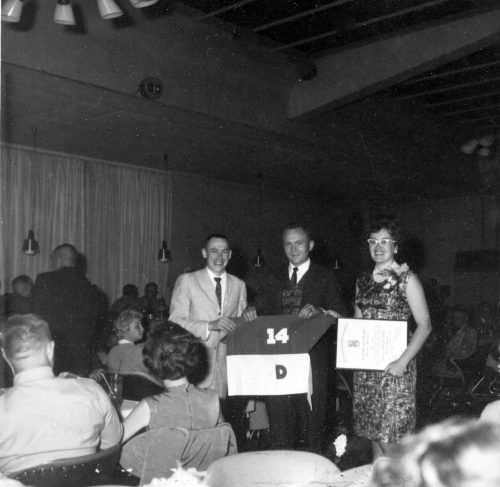
As of this writing, I have been retired over 43 years after 23 years’ service. Like all Army retirees, I served in many units and at numerous locations. Regardless, the 3½ years I served with the 14th were absolutely the best years of my life, in or out of the Army.
Staff Sergeant Max Whipps
Tank Commander / Troop Operations NCO
D Troop, 1st Reconnaissance Squadron, 14th Armored Cavalry Regiment
January 1961 – June 1964
Retired CW3 (MI)
